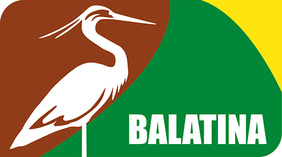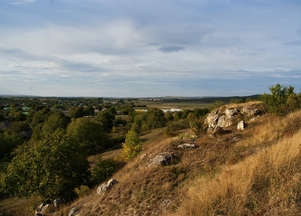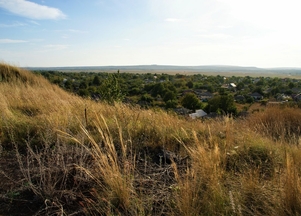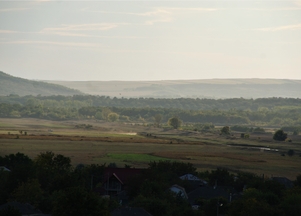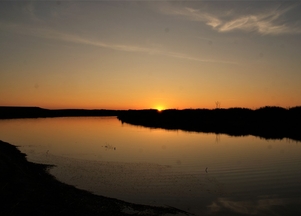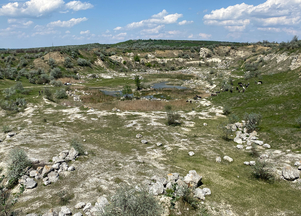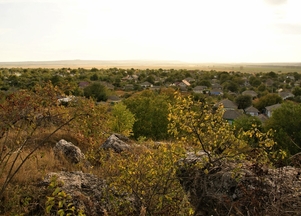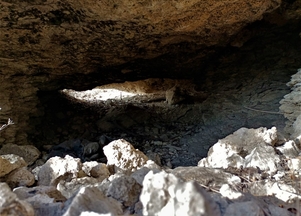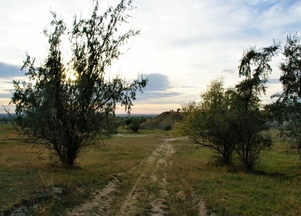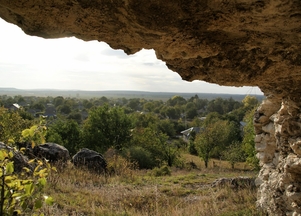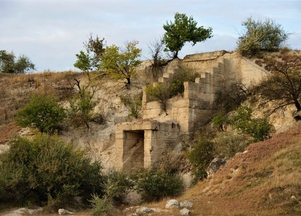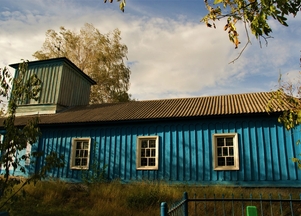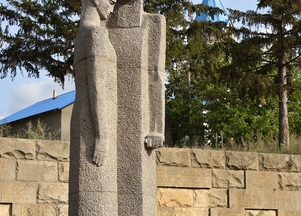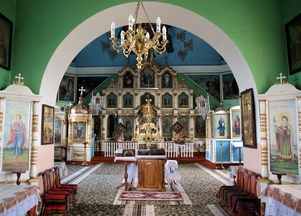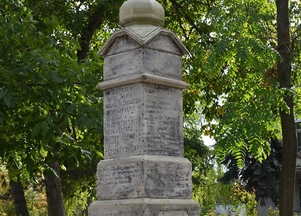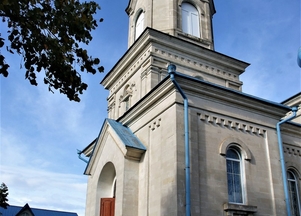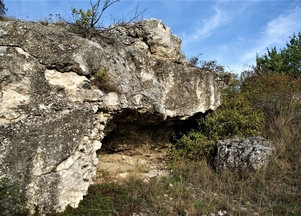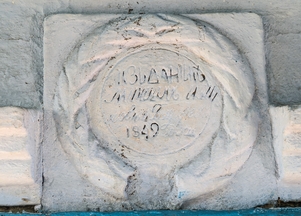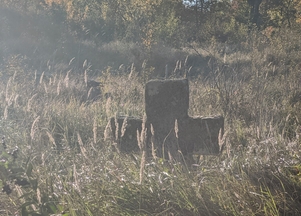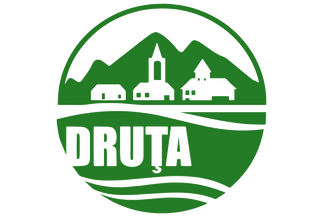Balatina
History
The village of Balatina was documented on June 19, 1429 (Statistical Dictionary of Bessarabia). In Vladimir Nicu's publication - "Localities of Moldavia in documents and old books", Volume I, it is published that the village of Balatina was also called Demeanouți, Zădureni, Tomești, Bălteni.
The origin of the name of the village Balatina.
According to the historical account of Anatol Eremia, a toponymy specialist, it is believed that the toponym's etymon comes from the Ukrainian word "boloto" which means swamp, mire.
It should be emphasised that the name of the village is spelled a little differently in the existing documents from the first attestation of the locality until today, so we can observe three variants: Balotina, Bolotina and the current variant Balatina.
In most of the documents from the first half of the 19th century - Balotina is written, but there are also sources in which the current version of the name - Balatina - is noted.
We can say with certainty that the village settlements were much earlier, about more than 14 000 years ago according to archaeological research. The first permanent human settlements established in the area of the present-day village of Balatina date back to the Roman period, when the inhabitants of this area cultivated the land, grew vines, practised various domestic crafts and raised cattle. They built large wooden houses covered with clay.
After the houses of the first settlement of the village, which was right on the banks of the Prut River, suffered from very large floods, the village moved a little further up the hill (the current location), where the fear of floods did not persist.
Legend
On the bank of the Prut, near Doamna's (Lady's) fountain, a group of people stopped for a short break: Men and women with children, exhausted and bitter from the long journey of several days and sleepless nights. The men were tall, handsome, broad in stature and very strong-willed.
They wore their hair parted on their foreheads and slicked back in braids. The women, dressed in woven Ia (traditional embroidered shirt) with flowered stitching and long skirts. They were quite lovely to look at, beautiful in face, slender in body - drawn as if through a ring.
They had something of the uncanny beauty of the image of the Virgin Mary painted on icons in monasteries and churches.
They unhitched the horses and before long the motley tents were pitched in the shade of the ancient oaks at the edge of the forest. Through the cold mist drifted the smoke rising from the fires lit for cooking.
Perhaps it pleased them, or perhaps the Lord himself sent them a ray of light and warmth, so the migrant community decided to stay here for a longer time.
Hunting wild animals and fishing were at first their main sources of livelihood. Gradually they began to herd sheep and cattle, and also took up farming, growing wheat and millet, and later began beekeeping and drying fruit.
There is a story that in the community that settled in the Prut valley there were two young people - named Bolo and Tina - who, because of their beauty and mutual love, had no equal in the surrounding villages. The lad differed from many young men of his age in that he wielded the bow and sword as well as the scythe and other tools for working the land with great skill. He was also a fierce horseman.
But the girl wasn't one of the ugly, weak-willed ones either. If she had to, she took up arms - hunting animals or even defending herself against villains, like a real man.
As befits a well-educated girl, Tina remained, first and foremost, the shelter's housekeeper - her mother's right-hand woman, the mirror of the family.
About three autumns after they and their parents came to these lands, when the wheat was being harvested and gathered, the barbarians crossed the river through the ford and rushed like wild beasts over the hamlet in the forest.
The cries of men, the weeping of women, the screams of frightened children in their sleep made the meadow resound with tragedy. It was a night of the heathen, who, meeting with opposition, put everything through fire and sword, burning, scorching and destroying everything in their path.
The tents burned, the men of this nation fell wounded by arrows, in a life and death struggle to defend their dignity. The chief of the settlement commanded that women and children should be saved from the barbarians' humiliation. Tina was also in charge of this.
Balo spoke to her to run away too, but the girl didn't listen and soon came sword in hand to the battlefield, where much innocent blood was spilled.
The news of the barbarian invasion spread late, very late, across the Prut valley with Moldovan settlements. And when help came, the hamlet was now deserted, many wounded unconscious.
Bolo and Tina were found next to an old lime tree pierced by several enemy spears. They looked like two pigeons, resting after a long and hard flight.
Clinging to the stem of the tree, the brave young man remained on his knees, facing the most precious and beloved being God had given him.
After the mothers and children returned, the dead were embalmed for two more days and nights, then buried according to all Christian customs at a forest edge. In the mass grave the young lovers found their final resting place.
On their grave they erected a large cross, and a few years later, not far from it, the construction of a wooden church began. Around the church the first houses of the future village began to appear, which they named after the two young people Bolo and Tina - Balatina, and this was in 1429 since the birth of Christ on 19 June.
Beautiful places
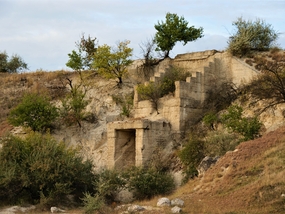
Old Stone Quarry
The old stone quarry of Balatina is located near the village, on the road Balatina-Lipovăț. Inside the site, from where stone was quarried between 1956 and 1991, a water basin was formed, which, due to the low rainfall, has also been drying up lately.
Read more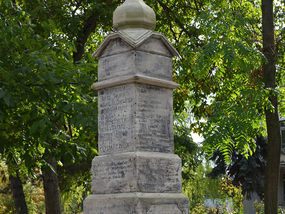
Monument to the Romanian Heroes
The Monument to the Romanian Heroes fallen in the First World War was erected in the interwar period and for the first time installed in the Balatina Public Garden. This monument was erected at the initiative of Nicolae Balcescu, Head of the Cultural Centre in 1937, "in memory of the Heroes who sacrificed themselves for Country, Nation, Throne and Faith". (Inscription on the front of the monument).
Read more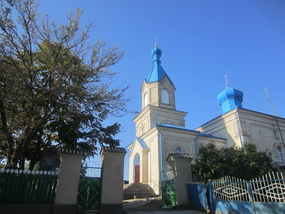
The Stone Church of the Assumption of the Mother of God
The stone church, according to records, was started in 1909 and was founded by the landlady Rozalia (Rallu) Klokoceva, the widow of General Klokochov, from Moscow. The stone for the construction was transported by locals with ox-drawn carts from Pociumbeni, Riscani district. The exterior of the church was completed in 1918, when the founder of the church Mihail Bodarev had passed away.
Read more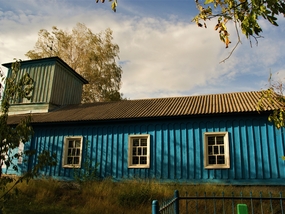
Wooden church in Balatina village cemetery
The wooden church in the shape of a ship in the village of Balatina, dedicated to "The Entrance of the Mother of God", was built in 1814-1815 at the initiative of the locals following the great floods that took place in the Prut valley in 1813, where at that time the first holy place of worship was located, which was washed away together with other houses of the first settlement of the village following the massive collapse of the river bank.
Read more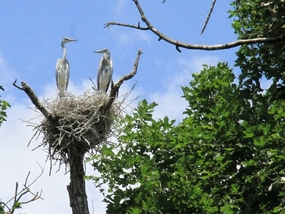
"Land of the Grey Herons"
"The Land of the Great Herons" - is a unique colony of over 1,000 wading birds nesting on oak trees. It is a part of the "Pădurea Domnească" (Royal Forest) reserve. The area of the oak forest where the Grey Herons nest is not very large - about 1 hectare.
Read moreFigures
Ala Mândâcanu (Mutelică), politician and journalist from Moldova. She was born on 14 December 1954 in the village of Balatina, r. Glodeni in the family of teachers Mutelica Anatol Iacov and Elizaveta Neculae (history teacher). Her father worked as head of the Public Library in Balatina.
Studied journalism at the State University of Moldova and management at ASEM. From 1994 to 2004 she was a member of the Moldovan Parliament, then editor-in-chief of the publication "Democracy", she was vice-president of the Social Liberal Party and Dean of the Faculty of Journalism and Communication at ULIM, community leader and promoter of gender equality at national and international level.
Since 2008 she lives in Montreal and is the President of the Community of Moldovans of the Canadian Department of Quebec (CMQ).
Ala Mândâcanu was awarded the Silver Medal of the Governor of Quebec for her outstanding involvement in volunteer work for the benefit of the community. In 2010 she was awarded the Order of Honour of the Republic of Moldova.
Anatol Stati, Businessman. He was born on October 25, 1952 in the family of Dumitru and Tamara Stati, a family that raised and educated 3 sons: Petru, Anatol and Victor. He graduated from the State University of Moldova.
Anatol Stati - founder, president and CEO of the company "Ascom Group" since 1994, he has had oil business in Kazakhstan and Sudan and is considered one of the richest people in Moldova.
Guțuleac Vasile was born in 1948 with his twin brother Ion, in the family of Pantelei and Vera Guțuleac, who raised and educated two sons and a daughter. He studied in Moscow and Odessa, obtaining a diploma as a professional journalist. Journalist, writer and poet, translator and plastic analyst. Since 1973 - member of the Writers' Union of the Republic of Moldova. Worked as editor-in-chief of the weekly newspaper "Spicul" ("Accent provincial") in Glodeni district. Since 2004 - specialist in the field of Libraries, from May 2005 to February 2011 he worked as Head of the Culture Section Glodeni.
Video presentation
In the following video presentation, you will be invited to discover the beauty of the banks of the Prut River in the Republic of Moldova. This picturesque area is known for its idyllic landscapes, where the river Prut flows quietly through the hills
photos by Iurie Sveț – www.hikeme.club
Useful Links
https://ro.wikipedia.org/wiki/Defileul_Duruitoarea
https://www.natura.md/canionul-horodiste-si-defileul-duruitoarea
http://www.moldova-tourism.md/index.php/ro/atractii-turistice/69-defileul-duruitoarea
https://www.moldova.org/turist-in-moldova-duruitoarea-veche-rascani/


 ro
ro
 ru
ru
